West India is a land of rich history, vibrant culture, and architectural wonders. From grand forts to ancient temples, this region tells many fascinating stories from the past.
The states like Rajasthan, Gujarat, Maharashtra, and Goa are home to some of the most iconic historical places in India. Each monument and structure here reflects the glorious days of kings, warriors, and empires.
Walking through these places feels like stepping back in time. You’ll find mighty forts, beautiful palaces, ancient caves, and sacred temples that still stand strong today.
These historical gems not only attract tourists but also inspire pride among locals.
Let’s explore some of the Glorious Heritage of West India that you shouldn’t miss!
Top 10 Historical places in West India.
1.] Chittorgarh Fort, Rajasthan
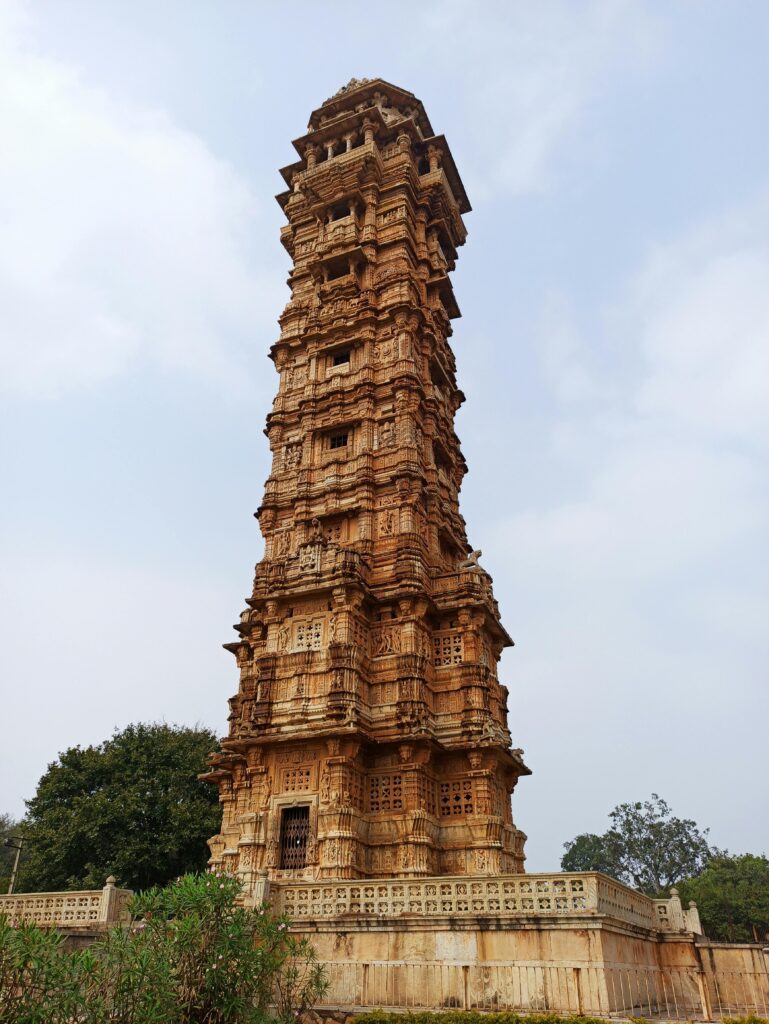
Chittorgarh Fort is one of the largest forts in India and full of heroic tales. It was once the capital of the Mewar kingdom.
This grand fort stands proudly on a hill, offering beautiful views of the city below. It has many palaces, temples, and towers inside.
The stories of Queen Padmini and Rani Karnavati are closely linked with this fort. The architecture is stunning and reminds visitors of the Rajput bravery.
The Vijay Stambh (Victory Tower) inside is a symbol of pride. People visit to explore history and admire the massive gates and stone carvings.
It looks magical during the evening light shows. This fort truly brings history to life.
2.] Ajanta Caves, Maharashtra
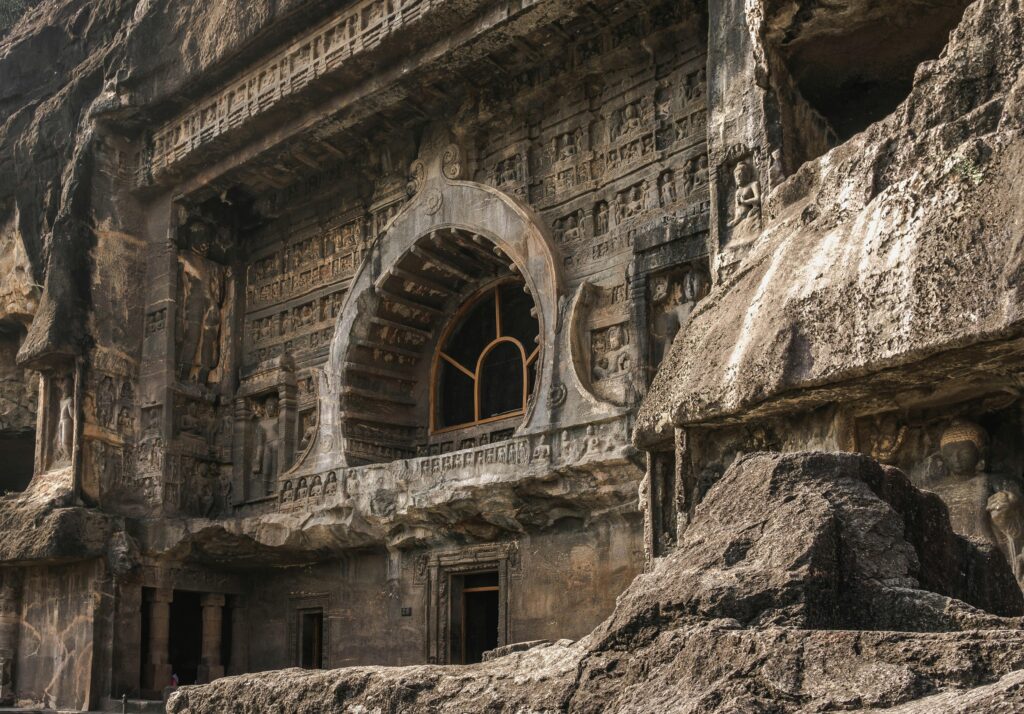
The Ajanta Caves are famous for their rock-cut Buddhist caves and beautiful paintings. They were carved out more than 2,000 years ago by monks.
These caves are filled with detailed carvings and colorful murals. The paintings mostly show scenes from the life of Buddha. Each cave has its own story and artistic style.
It’s peaceful and spiritual, surrounded by nature and hills. The artwork is so fine, it’s hard to believe it was made by hand so long ago.
The site is a UNESCO World Heritage Site. Tourists and art lovers from all over the world come to see it.
Ajanta truly feels like a hidden art gallery in the mountains.
3.] Mehrangarh Fort, Jodhpur, Rajasthan
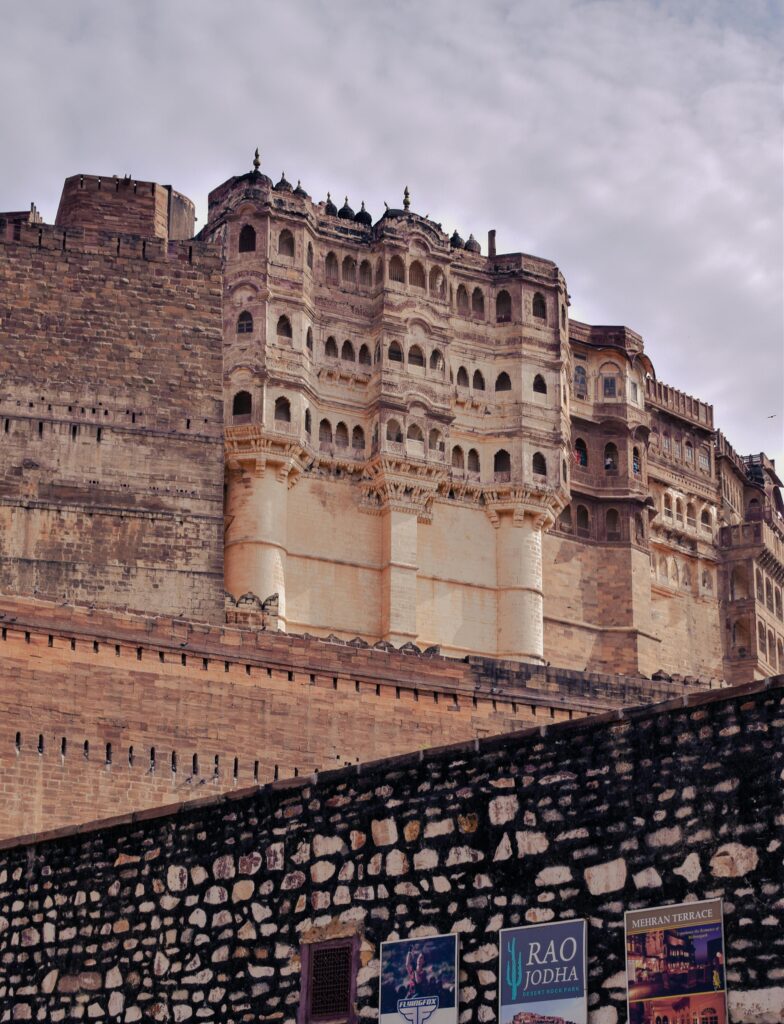
Mehrangarh Fort stands tall on a rocky hill, watching over the blue city of Jodhpur. It was built around 1459 by Rao Jodha, the founder of Jodhpur.
The fort is known for its thick walls, huge gates, and beautiful courtyards. Inside, you can explore palaces with lovely mirrors, carvings, and paintings.
The museum here displays weapons, clothes, and musical instruments from the royal era. You also get a great view of the entire city from the top.
The fort is still owned by the royal family of Jodhpur. It is well-preserved and gives a real feel of royal Rajasthan.
Visitors love the vibrant culture and folk music performances here. It’s both historic and majestic.
4.] Ellora Caves, Maharashtra
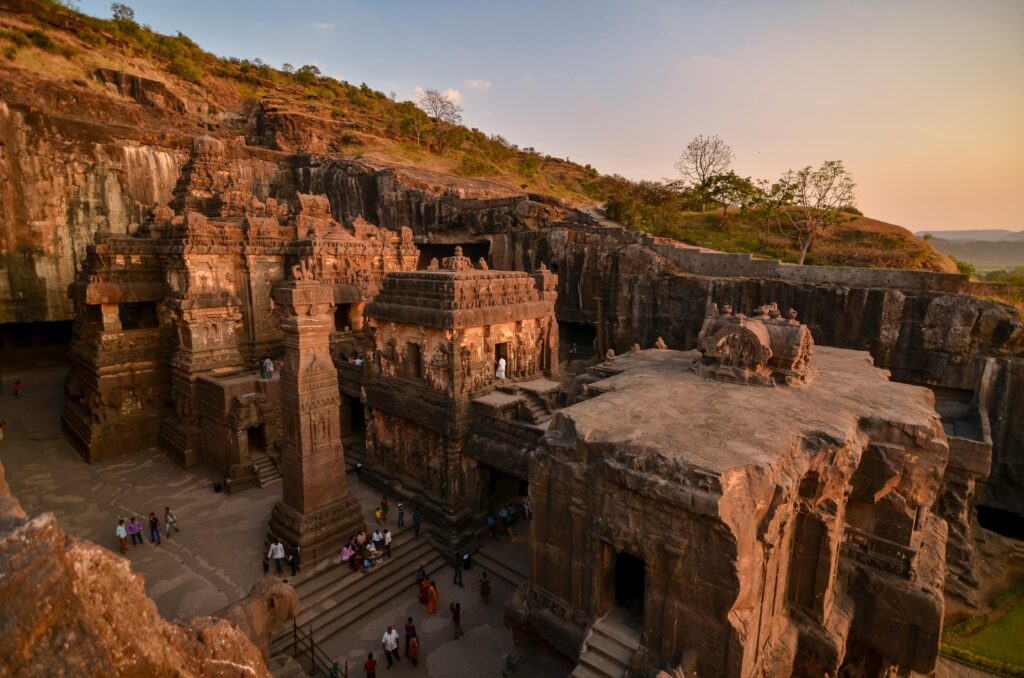
Ellora Caves are another amazing historical spot near Ajanta. Unlike Ajanta, Ellora has Hindu, Buddhist, and Jain temples all in one place.
The most famous structure here is the Kailasa Temple, carved from a single rock. It’s a masterpiece of ancient Indian architecture.
The carvings on the walls show stories of gods and kings. You can walk through large halls and narrow corridors full of detail.
These caves were created between the 6th and 10th centuries. It’s a mix of faith, art, and patience. People are always amazed by the size and creativity of the work.
Ellora is a symbol of unity in diversity.
5.] Rani ki Vav, Gujarat
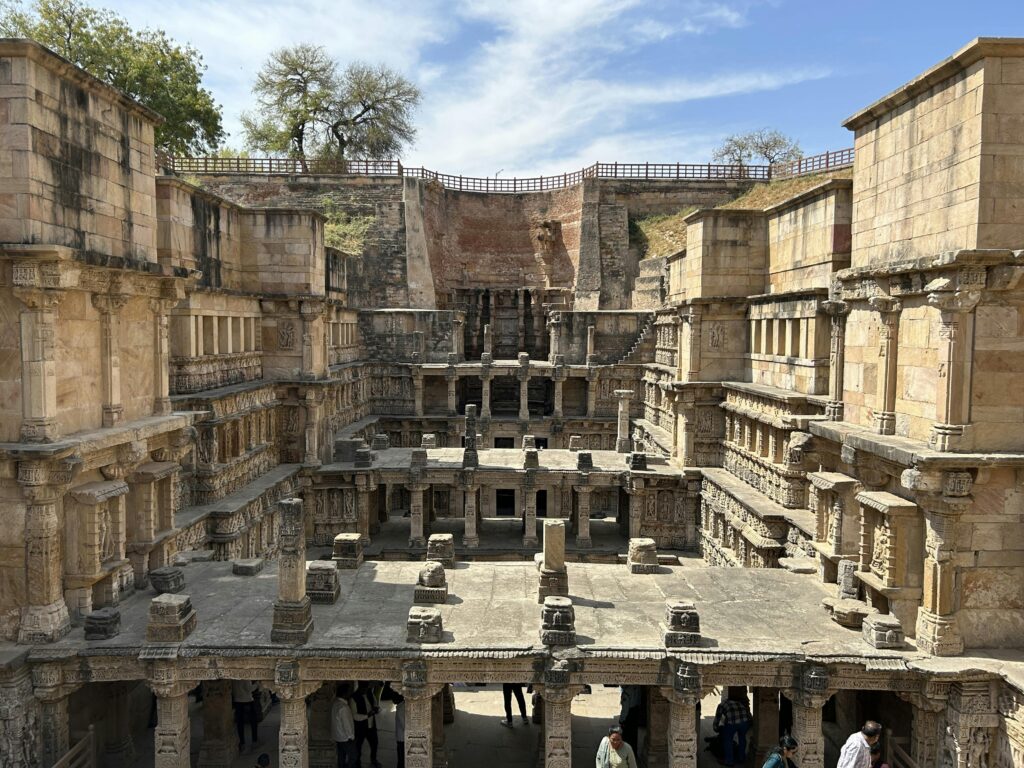
Rani ki Vav is a beautiful stepwell in Patan, Gujarat. It was built in the 11th century by Queen Udayamati in memory of her husband.
The stepwell goes deep underground and has many steps and pillars. Every level is decorated with fine carvings of gods and goddesses.
It’s not just a water source but a piece of art. The entire structure shows the beauty and intelligence of ancient Indian design. It’s also a UNESCO World Heritage Site.
People visit to see its amazing symmetry and sculptures. It stays cool even in summer because it’s built below ground.
Rani ki Vav is truly a hidden jewel of Gujarat.
6.] Junagadh Fort [Uparkot Fort] , Gujarat
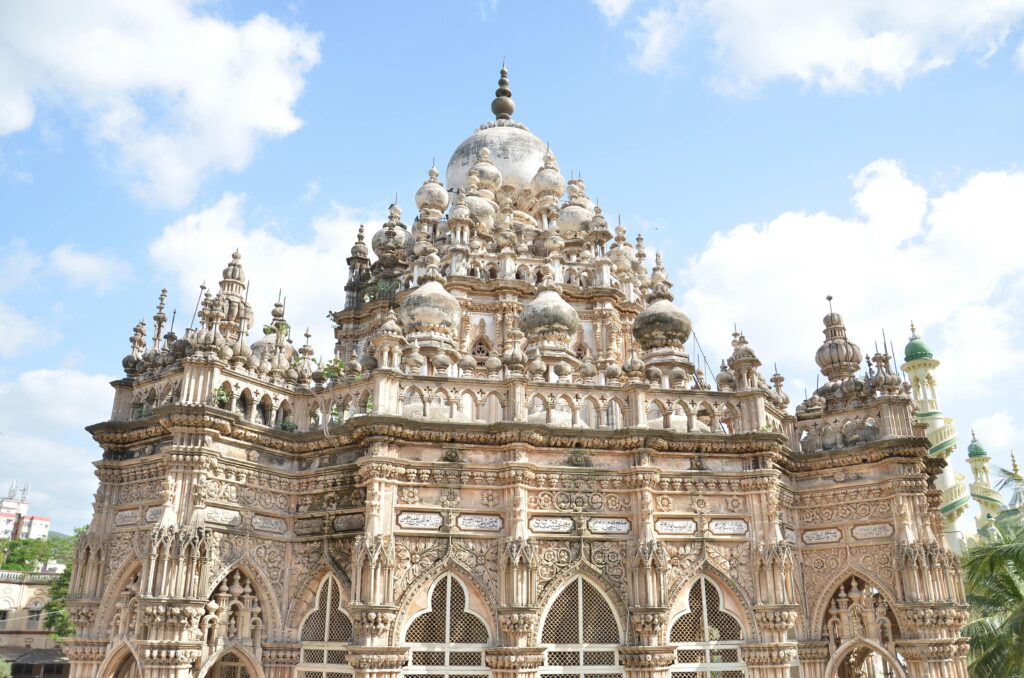
Photo by Ajaz Nai: https://www.pexels.com/photo/low-angle-shot-of-historical-heritage-7656672/
Uparkot Fort is a historical gem in Junagadh, Gujarat. It was built more than 2,000 years ago and has seen many rulers.
The fort has thick walls and grand gates that still stand strong. Inside, you can find ancient Buddhist caves and stepwells.
There’s also a cannon named Neelam-Tope that attracts attention. The fort is surrounded by legends and local tales.
From the top, you can enjoy a great view of the city and hills. The place has a quiet, peaceful feel with birds chirping around.
It’s less crowded and great for history lovers. Uparkot connects you to the deep roots of Gujarat’s past.
7.] Kumbhalgarh Fort, Rajasthan
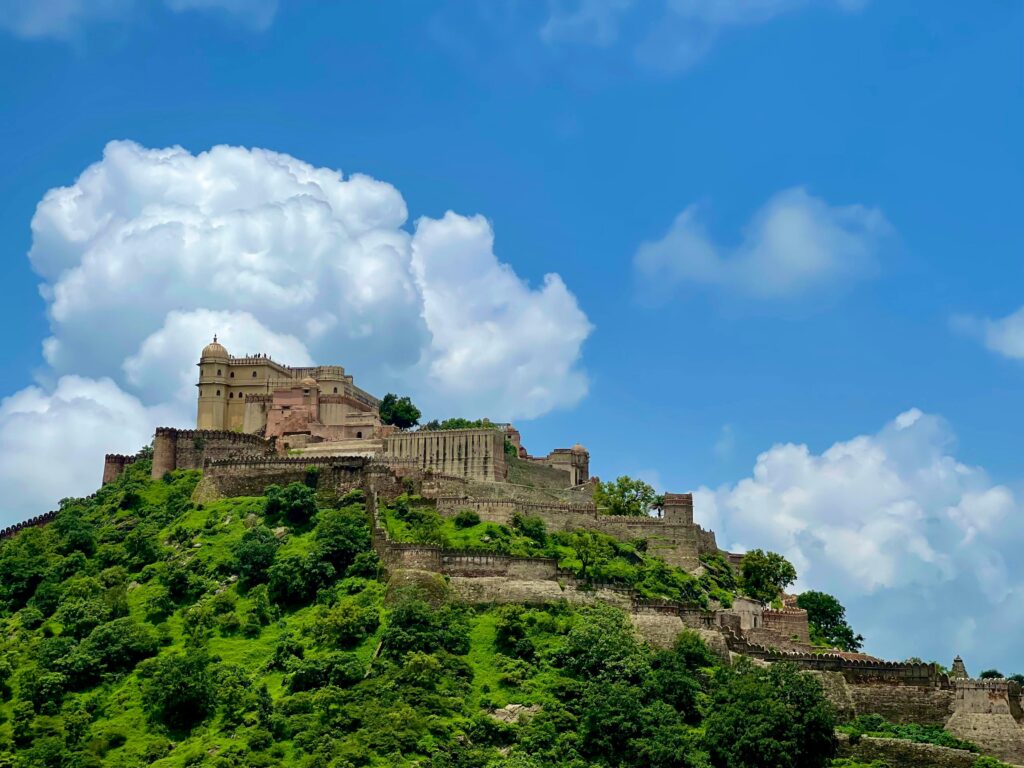
Kumbhalgarh Fort is known for having the second-longest wall in the world, after the Great Wall of China. It stretches over 36 kilometers.
The fort was built by Rana Kumbha in the 15th century. It is surrounded by the Aravalli Hills and offers breathtaking views.
The walls are so thick, even elephants couldn’t break them. It has over 300 temples inside – both Hindu and Jain. The fort is also the birthplace of Hindu king Maharana Pratap.
At night, the fort is beautifully lit, making it look like a golden castle. The calm surroundings and high location make it feel magical.
It’s a strong symbol of Rajput power and pride.
8.] Gateway of India, Mumbai

The Gateway of India is a famous landmark located on the waterfront of Mumbai. It was built in 1924 to welcome British royalty.
The structure is a blend of Hindu and Muslim architectural styles. It has become a symbol of Mumbai and India’s colonial history.
People love to take photos with it in the background. Boats to Elephanta Caves also leave from here. In the evening, the area is lit up and lively with street food and music.
It marks both the entry and the exit of the British from India. The Gateway is not just a monument but a part of the city’s soul.
9.] Champaner-Pavagadh Archaeological Park, Gujarat.

Champaner-Pavagadh is a unique historical park near Vadodara, Gujarat. It’s a mix of history, nature, and spirituality.
The site includes ancient temples, forts, and palaces. The Jama Masjid here is one of the finest mosques in India.
There’s also a hilltop temple of Kalika Mata that devotees visit. The whole area is a UNESCO World Heritage Site. It feels like walking through a forgotten city.
The place has a peaceful vibe with green hills and old ruins. It’s perfect for both history lovers and nature seekers.
10.] Surya Mandir, Modhera, Gujarat

Surya Mandir in Modhera, Gujarat, is a stunning ancient temple dedicated to the Sun God. It was built in the 11th century by King Bhima I of the Solanki dynasty, who were great worshippers of the sun.
The temple is beautifully designed so that the first rays of the morning sun directly light up the main shrine. Its architecture is truly amazing, with detailed carvings on the walls and pillars that tell stories from Hindu mythology.
The temple has three main parts – the main shrine (Guda Mandap), the hall (Sabha Mandap), and a large stepwell (Surya Kund) in front. The Surya Kund has 108 small shrines around it and was once used for ritual baths.
Although the idol of the Sun God no longer exists, the temple still attracts visitors for its peaceful vibe and artistic beauty. The whole structure is made of sandstone and showcases the skill of ancient Indian craftsmen.
Every year, the Modhera Dance Festival is held here, celebrating Indian classical dance in this historic setting.
Visiting this temple is not just a spiritual experience but also a journey through India’s rich cultural heritage.
West India is truly a land of history, culture, and timeless beauty. Each historical place tells a different story from the past.
From mighty forts to peaceful caves, every site leaves a lasting impression. These places not only reflect our glorious heritage but also inspire a deep sense of pride.
Visiting them feels like walking through the pages of history. Whether you’re an art lover, a history enthusiast, or a curious traveler, these destinations have something special for everyone.
Exploring them helps us understand the roots of our rich Indian culture. They remind us of the bravery, wisdom, and creativity of our ancestors.